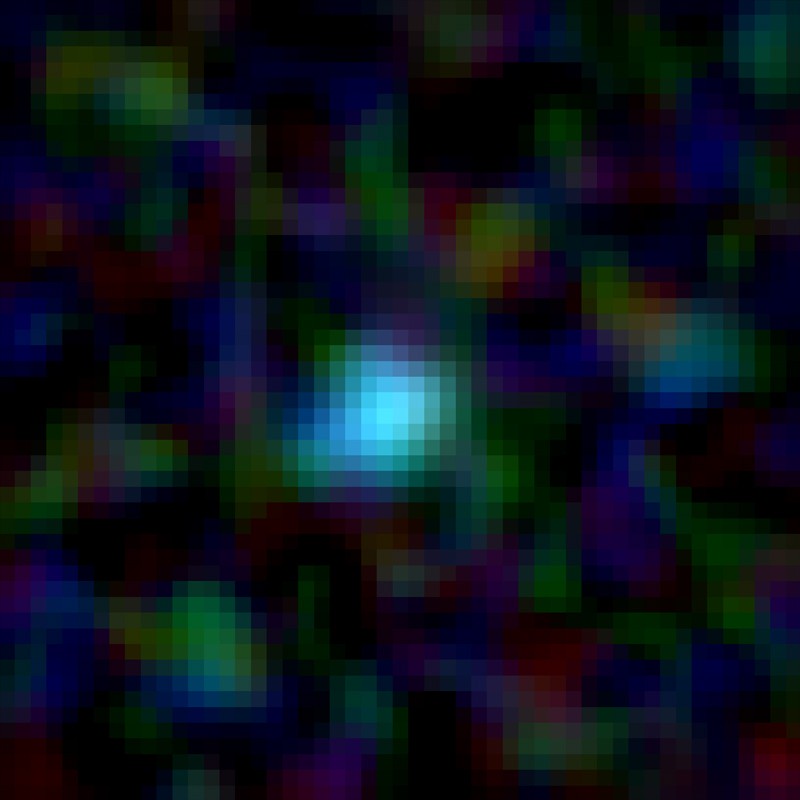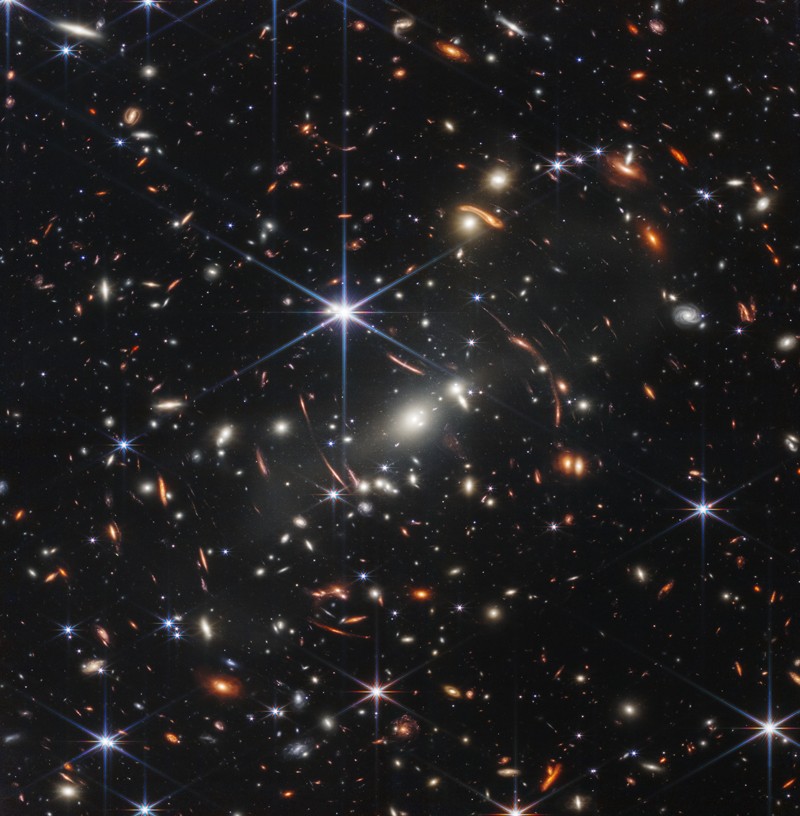NASA built its state-of-the-art James Webb Space Telescope to peer into the distant Universe and back towards the dawn of time — and it’s already doing so spectacularly. In the two weeks since Webb’s first science images and data became available for astronomers to work with, they have reported a flood of preliminary discoveries, including multiple contenders for what could be the most distant galaxy ever seen.
Webb’s images reveal a wealth of galaxies glimmering in the distant cosmos, appearing as they did just a few hundred million years after the Big Bang 13.8 billion years ago. The telescope’s astonishingly sharp pictures have shattered astronomers’ preconceptions about the early Universe.
“We had in mind an idea of what galaxies at these [distances] would look like, and how much detail we’d be able to see, but I think the reality is just kind of blowing our mind,” says Jeyhan Kartaltepe, an astronomer at the Rochester Institute of Technology in New York.
Here are some things astronomers are learning from Webb’s first observations.
There are an awful lot of galaxies way out there.
Because Webb detects infrared light, and because the expansion of the cosmos stretches light to redder wavelengths, the telescope is well suited to spotting galaxies that formed early in the Universe’s history. In its first observing programmes, which kicked off in June, Webb discovered many distant galaxies that lie beyond the reach of other observatories, such as the Hubble Space Telescope.
“It suggests what many of us have been arguing, that there are galaxies out there beyond what we saw with Hubble,” says Richard Ellis, an astronomer at University College London.
The era of early galaxies began at ‘cosmic dawn’, starting perhaps around 250 million years after the Big Bang, when the first stars formed and lit up the Universe. Later generations of stars amassed themselves into galaxies, which are the faint red blobs that Webb is beginning to discover.
Many of the Webb images are peppered with never-before-seen galaxies in the distant Universe. “There’s hardly any empty space that doesn’t have something,” Kartaltepe says.
One study combed through data from many of the distant galaxy fields Webb has observed so far, to analyse the rate at which stars formed in the early Universe. It found 44 previously unknown galaxies stretching back to within 300 million years of the Big Bang. Combined with 11 previously known galaxies, the findings show that there was a significant population of galaxies forming stars in the early Universe1. The results “re-affirm the enormous potential of forthcoming larger [Webb] programmes to transform our understanding of the young Universe,” wrote the team, led by Callum Donnan of the University of Edinburgh, UK, in a paper on the arXiv preprint server.
Many galaxies are competing for the ‘most distant’ title.
Perhaps the highest-profile rush is the stampede of research teams vying to identify the most distant galaxy in the Webb data. A number of candidates have been spotted that will need to be confirmed through further studies, but all of them would break Hubble’s record for the most-distant galaxy, which dates to around 400 million years after the Big Bang2,3.
One contender popped up in a Webb survey called GLASS that included another, slightly less faraway galaxy in the same image4. “The fact that we found these two bright galaxies, that was really a surprise,” says Marco Castellano, an astronomer at the National Institute for Astrophysics in Rome. He and his colleagues weren’t expecting to find any galaxies that distant in this small part of the sky. A second team also independently spotted the two galaxies5.
Astronomers characterize the distance of galaxies with a measure known as redshift, which quantifies how much a galaxy’s light has been shifted to redder wavelengths; the higher the redshift, the more distant the galaxy. The GLASS candidate has a redshift of about 13. But on 25 and 26 July, days after astronomers reported the GLASS galaxies, papers claiming even higher redshifts flooded the arXiv preprint server. “This is just the beginning of the beginning,” says Rohan Naidu, an astronomer at the Harvard-Smithsonian Center for Astrophysics in Cambridge, Massachusetts.
One candidate, at a redshift of 14, emerged in a survey called CEERS, one of Webb’s highest-profile early projects. The CEERS principal investigator, Steven Finkelstein at the University of Texas at Austin, nicknamed the object Maisie’s Galaxy, after his daughter6. Another study looked at the very first deep-field image from Webb, released by US President Joe Biden on 11 July, and found two potential galaxies at a redshift of 16, which would place them just 250 million years after the Big Bang7. And other arXiv papers speculate on other candidates, even out to redshifts of 208.
Some early galaxies are surprisingly complex.
Webb’s distant galaxies are also turning out to have more structure than astronomers had expected.
One study of Webb’s first deep-field image found a surprisingly large number of distant galaxies that are shaped like disks9. Using Hubble, astronomers had concluded that distant galaxies are more irregularly shaped than nearby ones, which, like the Milky Way, often display regular forms such as disks. The theory was that early galaxies were more often distorted by interactions with neighbouring galaxies. But the Webb observations suggest there are up to 10 times as many distant disk-shaped galaxies as previously thought.
“With the resolution of James Webb, we are able to see that galaxies have disks way earlier than we thought they did,” says Allison Kirkpatrick, an astronomer at the University of Kansas in Lawrence. That’s a problem, she says, because it contradicts earlier theories of galaxy evolution. “We’re going to have to figure that out.”
Another preprint manuscript suggests that massive galaxies formed earlier in the Universe than previously known. A team led by Ivo Labbé of the Swinburne University of Technology in Melbourne, Australia, reports finding seven massive galaxies in the CEERS field, with redshifts between 7 and 1010. “We infer that the central regions of at least some massive galaxies were already largely in place 500 million years after the Big Bang, and that massive galaxy formation began extremely early in the history of the Universe,” the scientists wrote.
And studies of galactic chemistry also show a rich and complicated picture emerging from the Webb data. One analysis of the first deep-field image examined the light emitted by galaxies at a redshift of 5 or greater. (Spectral lines that appear at various wavelengths of light correlate with the chemical elements composing the galaxies.) It found a surprising richness of elements such as oxygen11. Astronomers had thought that the process of chemical enrichment — in which stars fuse hydrogen and helium to form heavier elements — took a while, but the finding that it is under way in early galaxies “will make us rethink the speed at which star formation occurs”, Kirkpatrick says.
Closer galaxies are smaller than expected.
The surprises from Webb continue even a little later in the Universe’s evolution. One study looked at Webb’s observations of ‘cosmic noon’, the period approximately 3 billion years after the Big Bang. This is when star formation peaked in the Universe, and the most light was created.
Wren Suess, an astronomer at the University of California, Santa Cruz, compared Hubble images of galaxies at cosmic noon with Webb images of the same galaxies. At the infrared wavelengths detected by Webb, most of the massive galaxies looked much smaller than they did in Hubble images12. “It potentially changes our whole view of how galaxy sizes evolve over time,” Suess says. Hubble studies suggested that galaxies start out small and grow bigger over time, but the Webb findings hint that Hubble didn’t have the whole picture, and so galaxy evolution might be more complicated than scientists had anticipated.
With Webb just at the beginning of a planned 20-plus years of work, astronomers know they have a lot of changes ahead. “Right now I find myself lying awake at three in the morning,” Kirkpatrick says, “wondering if everything I’ve ever done is wrong.”

